English > Research Paper > RESEARCH PAPER: Distorted View of Body Image due to Media in Young Girls (DOWNLOAD TO GET A) (All)
RESEARCH PAPER: Distorted View of Body Image due to Media in Young Girls (DOWNLOAD TO GET A)
Document Content and Description Below
Distorted View of Body Image due to Media in Young Girls Student’s Name Institutional Affiliation Date In the early centuries, a woman's value in society was based on her fertility, s... exual purity, femininity, and ability to make a home. The men in this society were not fussed about the outward appearance of a woman. Women would eat anything without judgment and fear of getting fat and in some communities, being fat was admirable as it was considered a sign of wealth and prosperity. However, in the current community, the culture has changed, and the beauty standards have drastically shifted. Unlike in the past, appearances are very much focused on, and being thin is very admirable. In the past, when there was no media, beauty was not commercialized, and people used to sell products were very ordinary. However, the development of media has created a problem for women all over the world. Media portrays a certain type of woman as the acceptable beauty standard, and this has created a pandemic among women where they desire to look a certain type of way to be socially accepted as beautiful. Therefore, the following essay will show that the media has caused young girls to have a distorted view of their own body images because of image sharing apps influence, and types of women the media displays as beautiful, and consumerism of products through media. The internet has many platforms where people feel free to share their pictures, such as Instagram, Facebook, and Pinterest. The apps allow other users to react to content through likes and comments. People get attention from all over the world when they post aesthetically pleasing photos. Most of the women that get up to a million likes almost look a certain type of way. They are skinny with well-defined body features, and this is one cause of young girls having a distorted view of how a beautiful woman should like (Morin, 2020). If a fat girl sees this kind of content online, they immediately start to become aware of their bodies, and they end having the idea that they do not meet the beauty standard. It is even worse when they post a picture, and it ends up not getting like or they get bullied for their weight. Through this, they feel the need to lose weight to fit in the society's standard of beauty. Through National Surveys, it has been revealed that young girls between the ages of 11-17 main goal was to "lose weight and keep it off," and more than 80% of the girls have been on a diet before they reach the ages of 18 (Akram & Kumar, 2017). However, the girls at their young ages cannot understand that the ideal thinness displayed on this app is unideal to attain. Therefore, social media has contributed to young girls seeing beauty as been thin, and this has distorted the view of young girls to their own bodies. Almost all media displayed for consumers, such as advertisements, movie castings, among others, has women that look a certain type. The women in these media are normally thin and aesthetically pleasing with fair skin, and when young girls view such type of content, they immediately become aware of what is considered beautiful. Apart from viewership, it is reported that about 5% of all advertisements on television focus on selling the idea of losing weight to its viewers (Ferguson et al., 2014). Through such content young girls have already become aware that being fat is a problem that should be fixed. Having fairer skin is considered the acceptable look, and this has prompted many young girls to apply a lot of filters on their photos to look a certain way. Many young across the world that belong have dark features have opted to lighten their skin tones. The problem arises from media companies prefer lighter skins for jobs as they are considered more pleasing for the camera. The pressure of looking a certain way by the media is the main reason why young girls do not see the value in their natural completions. Apart from this, young girls from the ages of 13-18 years of age have been reported to have better skills in makeup applications as compared to older women (Fardouly & Vartanian, 2016). Apart from this, movie casting for teenage shows cast actors that fit the accepted beauty standards. When young girls see their peers looking a particular way, they will get obsessed with achieving similar looks. Through this, there is no way that a fat girl would be convinced that they are beautiful, and this has distorted the view of image and beauty among young girls. Consumerism through media is one of the main contributors of body image negativity among young girls in the world. The media has made consumption of makeup products conscious whereby they use insecurities to sell products and this has affected the way young girls view themselves. The companies use strategy such as displaying women that have flawless skin to attract attention of the market. When young girls see the flawless models on television, who have been highly edited, they become aware of their faces, and why theirs is not as smooth as the models, and how they can achieve the look. Capitalism has capitalized on these insecurities, and young girls have highly invested in the industry because they hope to attain the same looks, they see on the media. Body fixations such as slimming pills and teas have also hit the market, convincing the audience the need to be skinny and this has also contributed to the problem. When young girls see such products, they become aware of their looks and this distorts their view on their body images. Even though the media causes young girls to have distorted views on body image, it is arguably true that many women use the media as a scapegoat for their insecurities on the way they look. According to (Ali 2018), it has been proved that women tend to be the jealous gender, and this plays a significant role in the way they see others physically and the way they see themselves. Therefore, a young girl will see another woman and feel the need to look the exact same way. When a young girl has low self-esteem in the way she looks at a particular part of her body, she will always get disturbed by such factors until she changes it. The media is accused of a problem that society provided a long time ago. Beauty standards have been alive in society for the longest time, even before the media came into place. Old literature describes a beautiful woman as tall and slender with fair skin. The problem of feeling the need to look a certain way comes from inner thoughts and insecurities, and therefore, looking certain has nothing to do with influence from the media. Many young girls have bigger bodies on social media, and they feel beautiful and accept themselves openly. Nonetheless, the study has found more evidence that media has caused young girls to have a distorted view of body images. Conclusively, through the many social media platforms and the type of women seen as the accepted beauty standard, it is evident that the media has a very influence on the way young girls view body image. Because many teens and young adults are still in their developmental stages, they crave attention and acceptance from their surroundings. The media has become a very powerful tool in the world. Almost all teenagers have access to social media and other media sources like television, and through this, they are easily influenced by what they see. A teenager will spend hours taking a selfie with the right angles and then editing it to make themselves look like the models they see online. When they do not attract the number of likes that deem fit for social fitting, they automatically feel they are not beautiful, and this causes them to engage in dangerous lifestyle activities like skipping meals to get a thinner frame. The media has distorted the standard of beauty for young girls all across the world. To deal with this problem, the media should take responsibility and allow women of all shapes to grace their media pages. When girls see this, they will accept themselves and will not be obsessed with the idea of looking a certain way. Parents should also teach their children about self-kindness and mindfulness. In the future, we will achieve a community that is diverse and accepting of differences in appearance. References Akram, W., & Kumar, R. (2017). A study on positive and negative effects of social media on society. International Journal of Computer Sciences and Engineering, 5(10), 351-354. Ali, S. (2018). Social media usage among teenage girls in Rawalpindi and Islamabad. Glob. Medina J, 16(31), 1. Fardouly, J., & Vartanian, L. R. (2016). Social media and body image concerns: Current research and future directions. Current opinion in psychology, 9, 1-5. Ferguson, C. J., Muñoz, M. E., Garza, A., & Galindo, M. (2014). Concurrent and prospective analyses of peer, television, and social media influences on body dissatisfaction, eating disorder symptoms, and life satisfaction in adolescent girls. Journal of youth and adolescence, 43(1), 1-14. Morin, A. M. Y. (2020, July 29). Help Prevent the Media from Damaging Your Teen's Body Image. Verywell Family. https://www.verywellfamily.com/media-and-teens-body-image-2611245 [Show More]
Last updated: 1 year ago
Preview 1 out of 6 pages
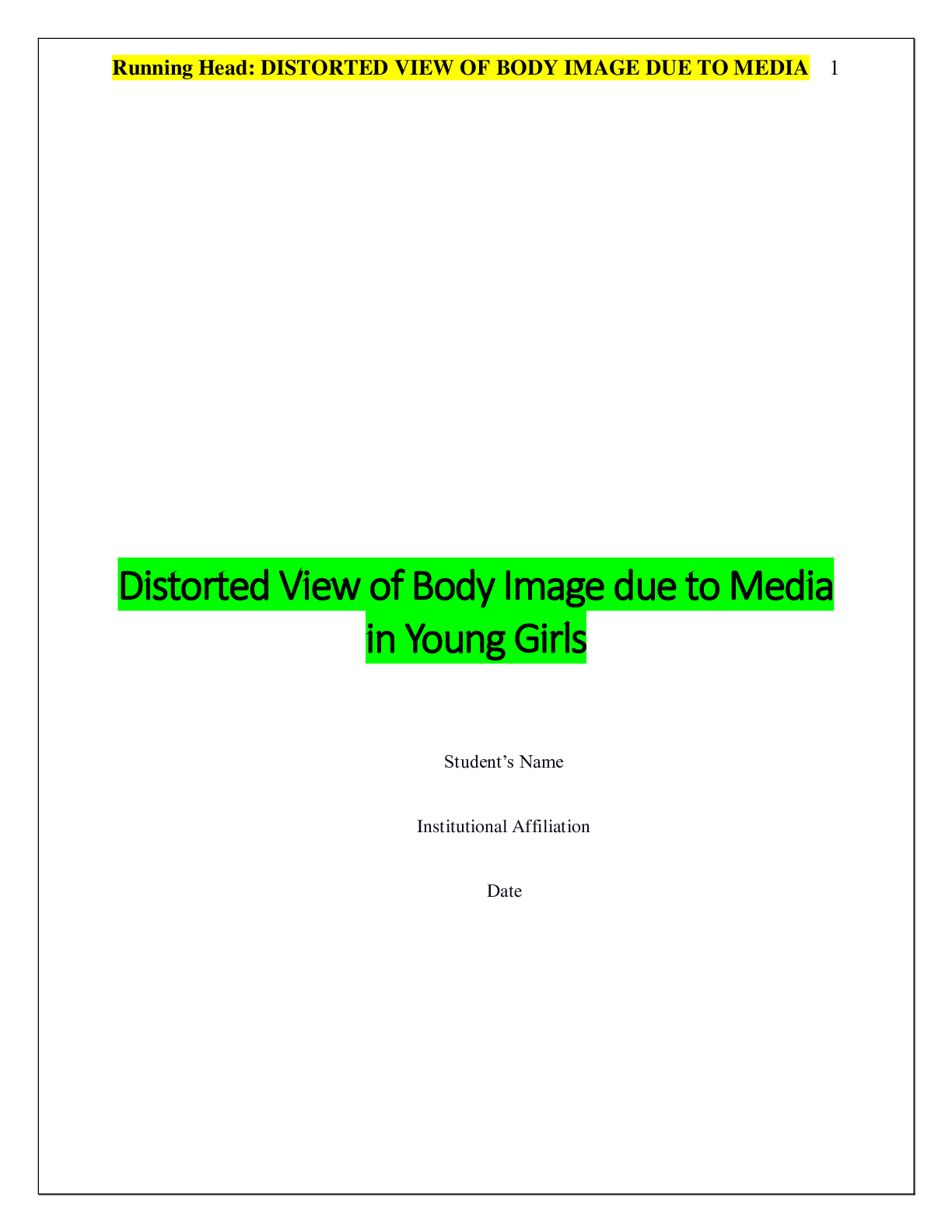
Reviews( 0 )
Document information
Connected school, study & course
About the document
Uploaded On
Sep 08, 2021
Number of pages
6
Written in
Additional information
This document has been written for:
Uploaded
Sep 08, 2021
Downloads
0
Views
61


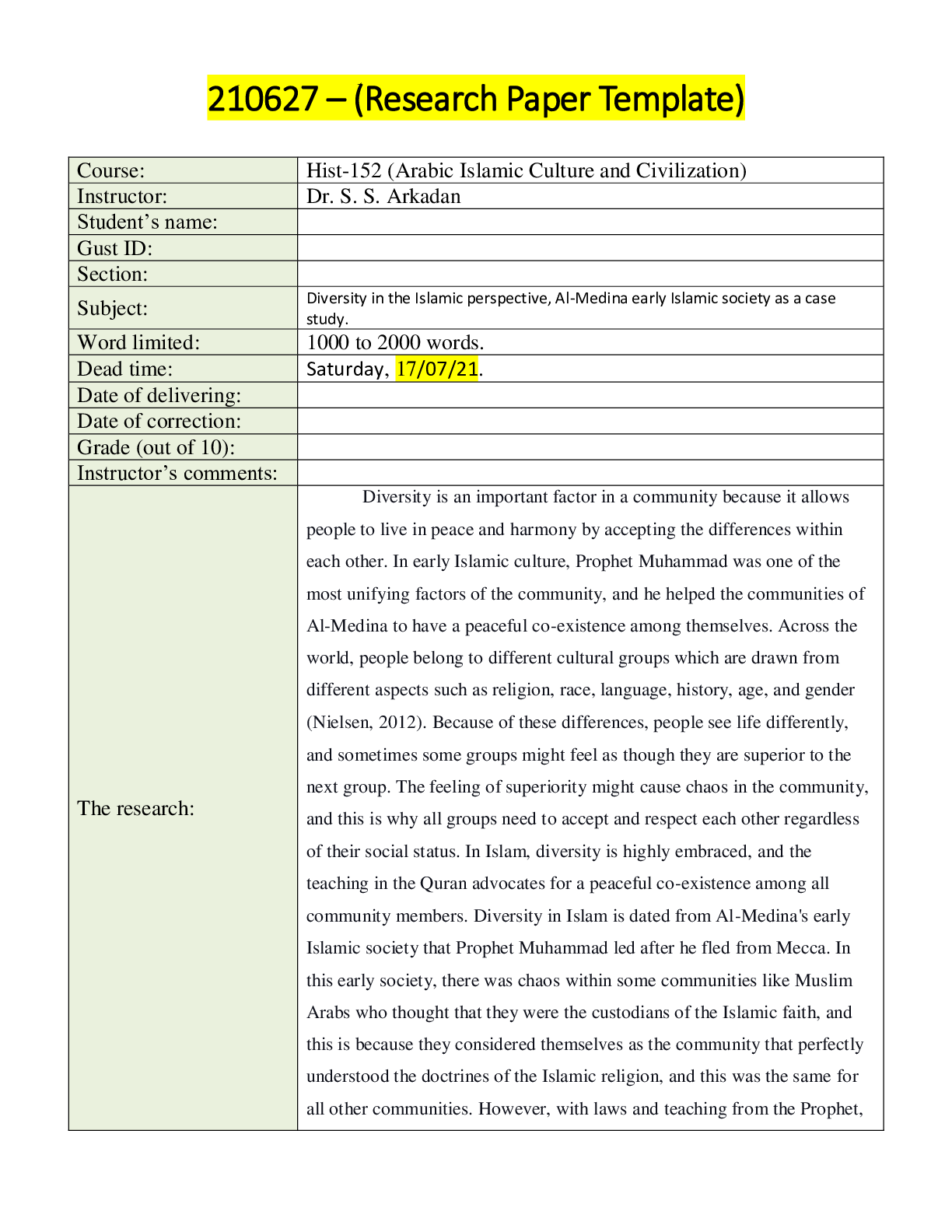



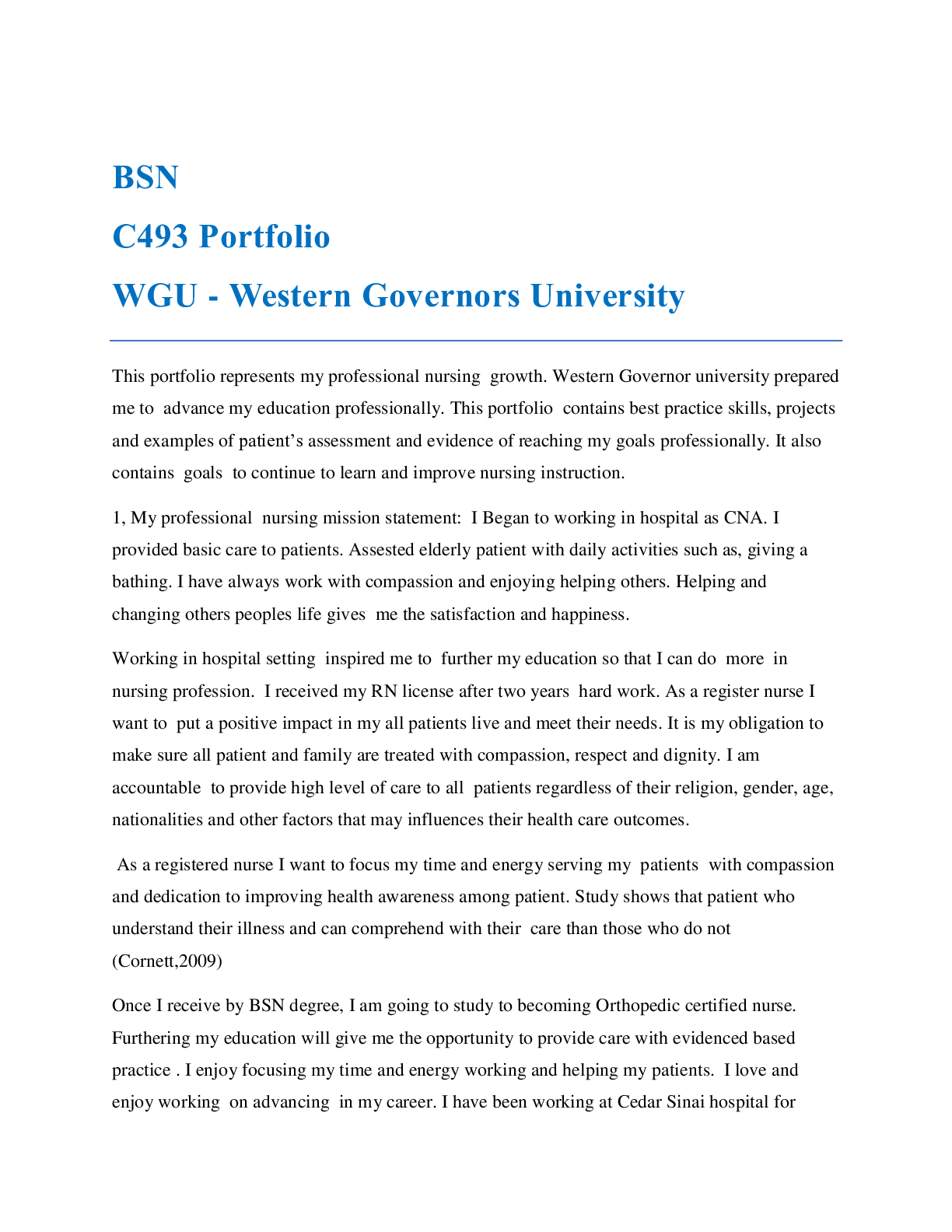
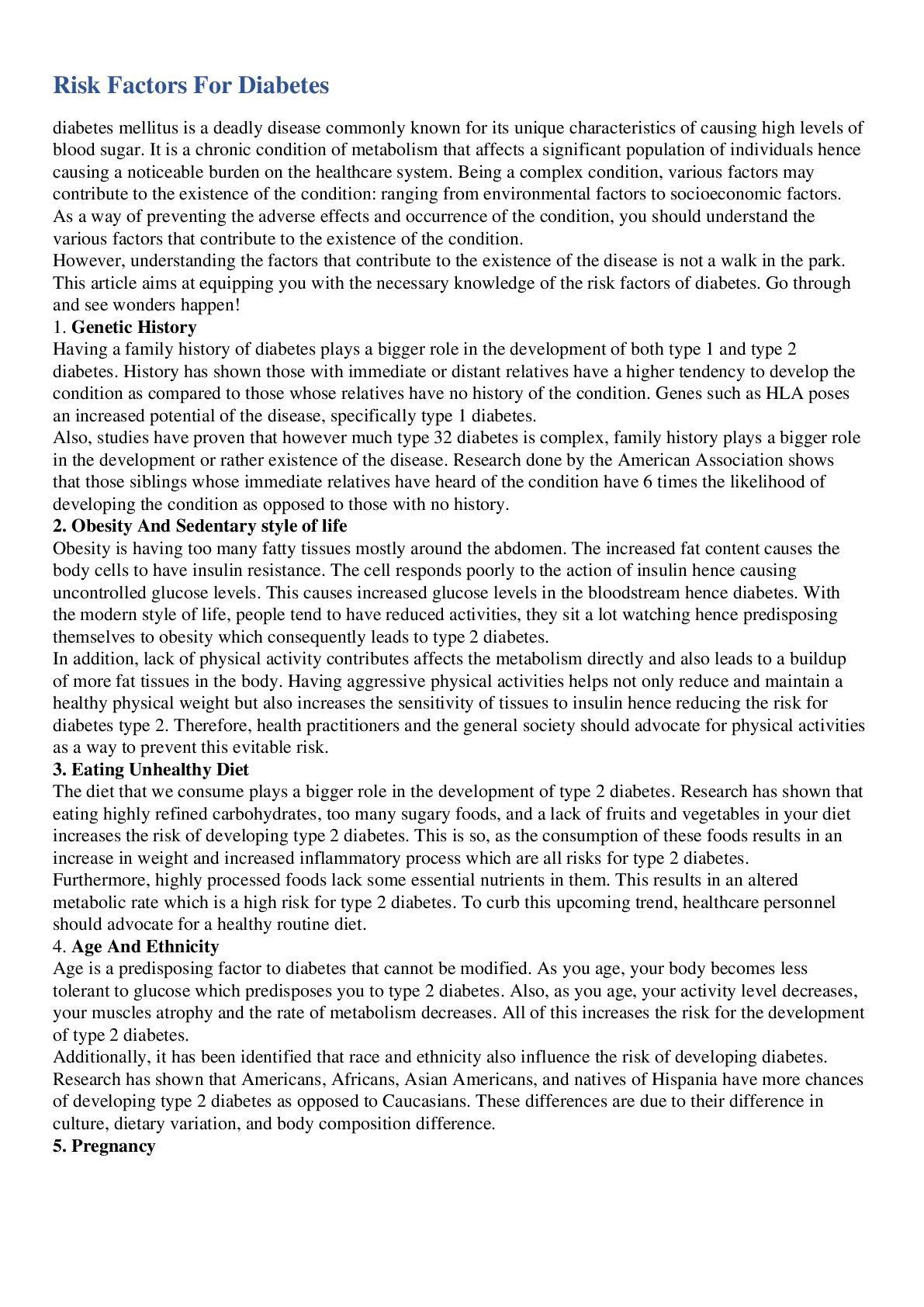

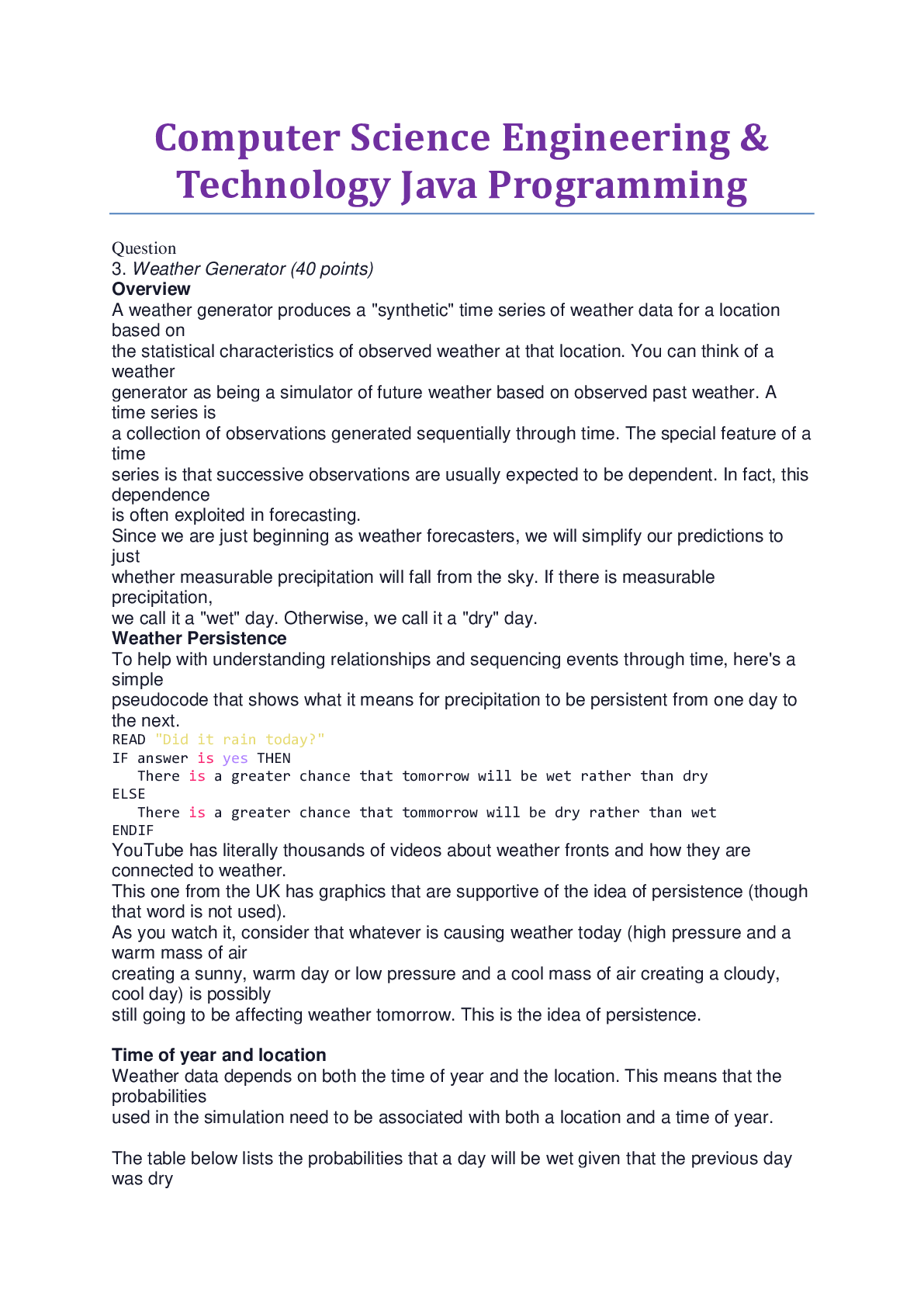
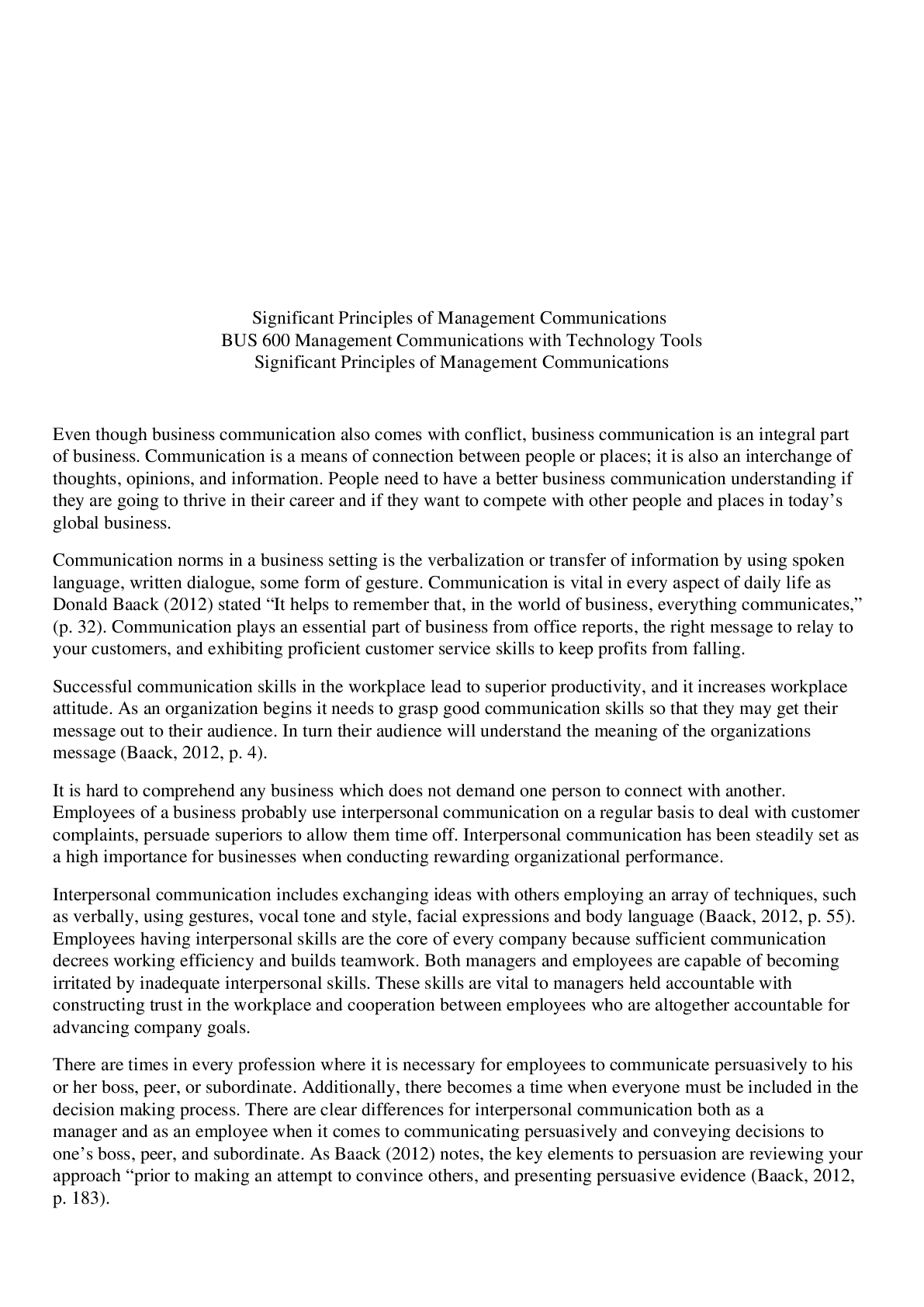
Interdisciplinary Paper.png)





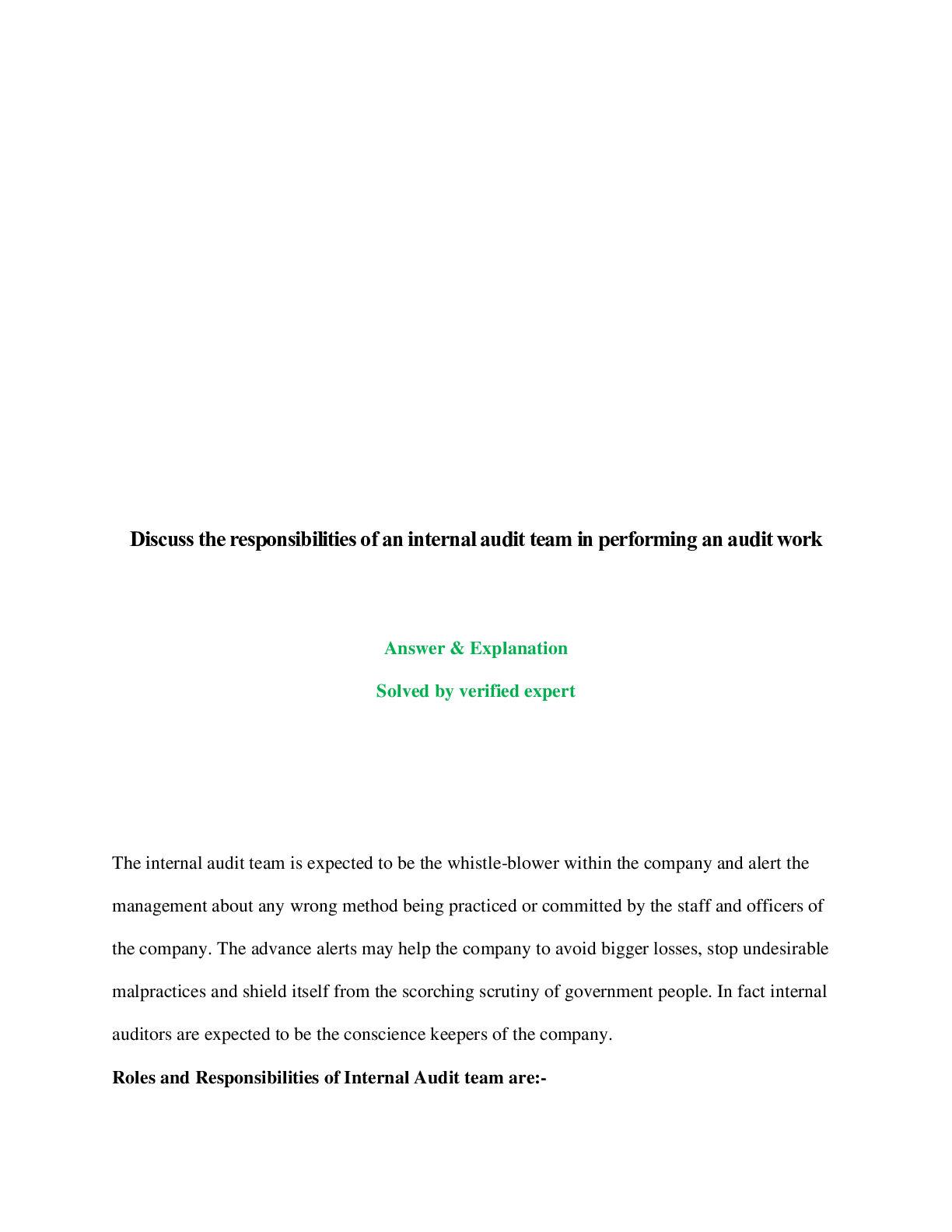


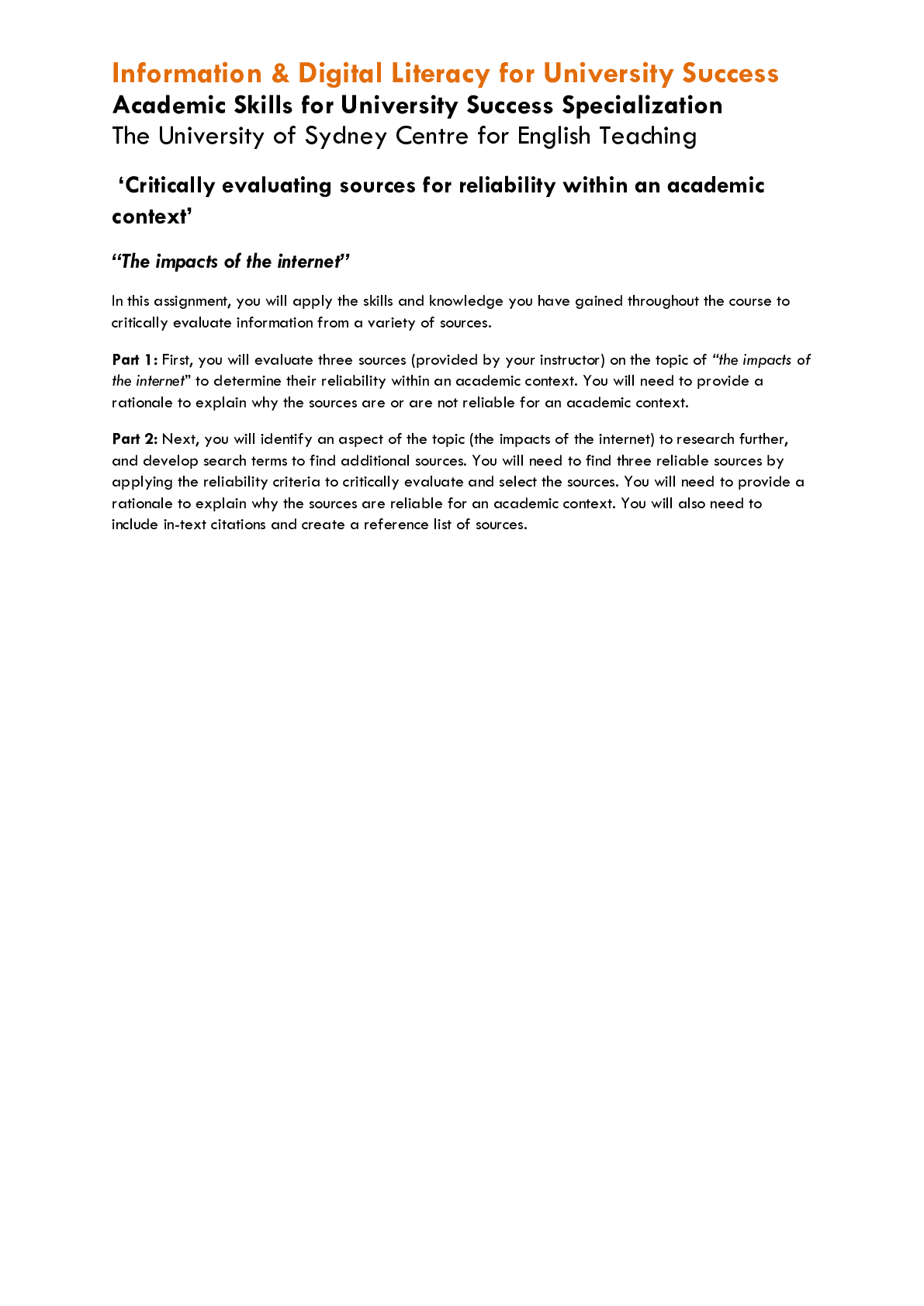

dfdfefe.png)

